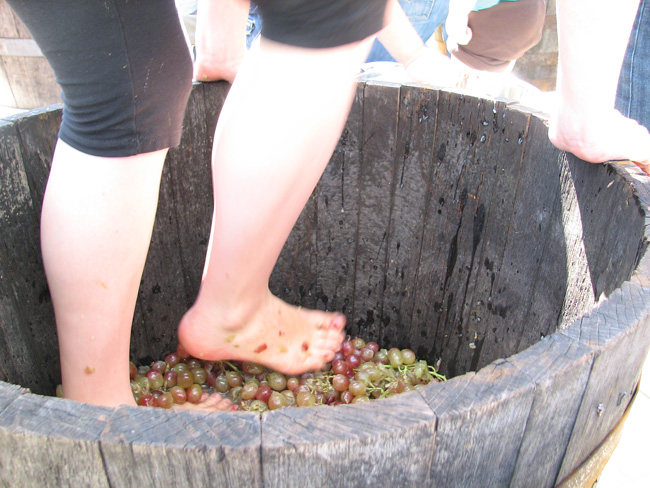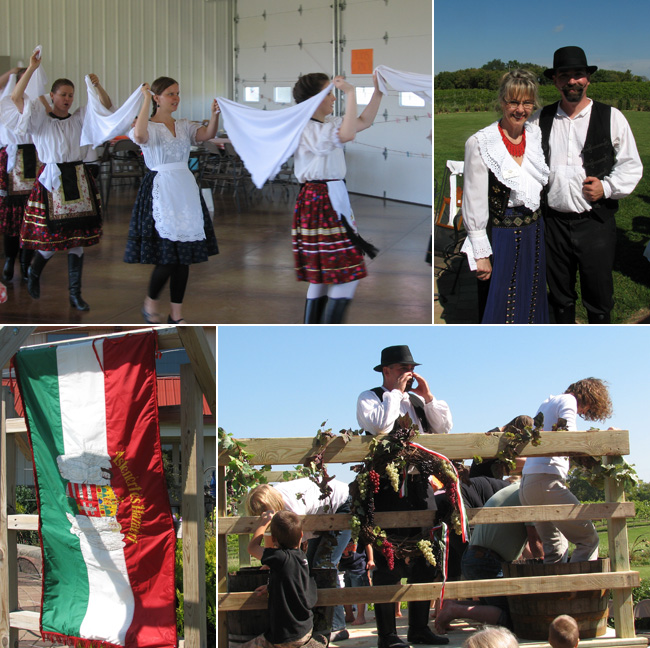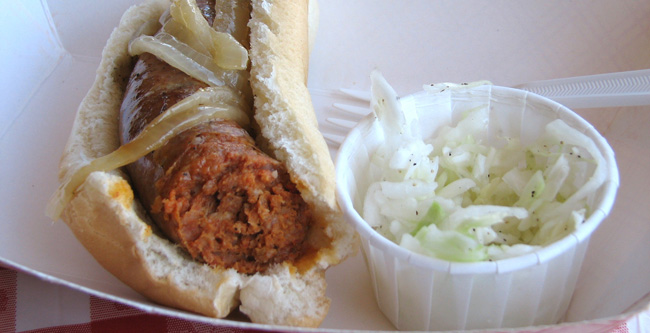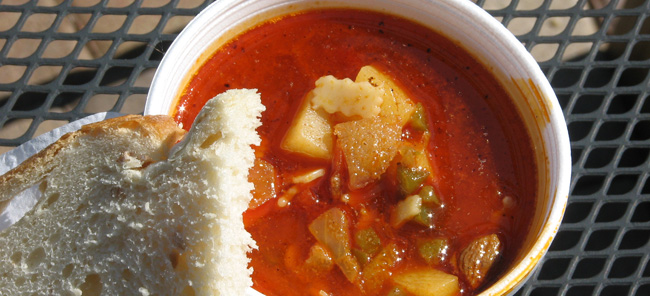
Quick — name some prominent Minnesotan ethnic immigrant groups. Scandinavians are a gimme. Germans? Check. Slavs? Check. Latinos? Check. What’s that? Hungarians didn’t cross your mind? But they’re here, and have been for a century, according to Csilla Grauzer, president of Minnesota Hungarians, Inc. and an Honorary Consul of Hungary.
According to Grauzer, the Hungarians first settled in Minnesota the Elk River area. The rate of immigration boomed in 1956 after the Hungarian Revolution. Today there are about 14,000 Hungarians in Minnesota, many initially hosted by a University of Minnesota agriculture program.
The community may be small, but it’s close knit and active. Minnesota Hungarians, Inc. offers a number of annual community events and a language school for kids and adults. This fall also saw the first Hungarian Harvest Festival, held at Millner Heritage Vineyard & Winery in Kimball. This vineyard was a logical choice; the Millner family has Austro-Hungarian roots, and the son of the owner is married to a Hungarian. Millner’s wines, all produced from Minnesota-grown grapes, have Hungarian names, including Drága (precious) and Naplemente (sunset).

Together, the vineyard and the Hungarians put on a lively, festive event, complete with Hungarian dancing and grape stomping. All across the patio, the sounds of people of all ages speaking Hungarian could be heard, as could one gentleman grousing about a song being in German rather than Hungarian.
No festival should exist without food, and this one was no exception. “The main ingredient in Hungarian cooking is paprika, and it’s in pretty much everything but dessert,” says Grauzer. “We use both sweet and hot. Hot is used in a lot of dishes, so our foods can be on the spicier side. We like a lot of flavor. But we tone it down for Minnesota and Scandinavians.”

She notes that traditional Hungarian peasant fare is centered on hearty meals comprised of stews or meat and potatoes. For the festival, the Minnesota Hungarians used traditional recipes provided by its members. A grilled paprika sausage was mild and sweet. It was served with a crunchy cabbage salad that was vinegary, rather than creamy. The sausage was prepared for the festival by Anoka Meat and Sausage, although, sadly, they produced it only for the event.
And of course, there was the iconic Hungarian dish, gulyás, or as it’s more commonly known, goulash. It’s often mistakenly thought of as a heavy noodle dish or a thick stew, but the traditional version is more of a cross between stew and soup, and the noodles are only a small part of it. “The word ‘gulyás’ means ‘herder’ in Hungarian,” Grauzer says. “It was the dish of Hungarian cowboys, cooked over an open fire outdoors, full of beef, potatoes, and vegetables, and usually dumplings.” There are numerous variations: babgulyás is cooked with shell beans, while palócgulyás has green beans. A Transylvanian version, székelygulyás, contains sauerkraut and is cooked with pork rather than beef. Regardless, any noodles or dumplings involved are “pinched,” meaning there are little pieces in the dish rather than large chunks.

Grauzer regretfully added that due to safety and insurance issues, the festival couldn’t offer the gulyás cooked in the traditional way over a fire, but that didn’t mean the gulyás that was served wasn’t worth eating. The slow-cooked beef was tender and added meatiness to the tomato broth. A good dose of jalapenos and black pepper gave the gulyás a welcome kick against the milder potatoes and noodles. A slice of cracked-wheat sourdough bread for sopping up the spicy broth was a perfect addition. It’s easy to see the appeal to the herdsmen of yore, returning from a hard day’s labor to find this slow-cooked, tantalizingly spicy and hearty dish waiting for them.

If they have a second festival next year — and we hope they do — the Hungarians should consider helping Minnesotans expand their palates by offering a spicy version of the paprika sausage along with the sweet … and as long as they’re at it, maybe some frozen sausage for visitors to take home with them. In the meantime, Grauzer shared the Minnesota Hungarians’ recipe for gulyás.
Hungarian Gulyás Soup with Egg Dumplings (Csipetke)
Serves 6
Reprinted with permission of Minnesota Hungarians, Inc.
1 lb beef chuck or shin, cubed
4 tbsp lard or vegetable oil
2 medium yellow onions, chopped
4 garlic cloves, crushed
1 large green pepper, chopped
2 jalapeno peppers, seeded and chopped
1½ tbsp sweet Hungarian paprika
salt
black pepper
1 tsp caraway seeds
7-8 c beef broth
1½ lbs red potatoes or other waxy potatoes, cubed
2 medium tomatoes, chopped
1. Season meat with salt, and set aside while the vegetables are cooking.
2. Heat the lard or oil in a heavy-bottomed soup pot over medium-high heat. Add the onions, garlic, and peppers. Season with salt and black pepper, and saute until fragrant and onions are translucent, about 10 minutes.
3. Add the meat and brown on all sides. Add the paprika and caraway seeds. Mix thoroughly, and add broth. Bring to a boil; lower the heat, and simmer, partially covered, for about 1½-2 hours, or until meat is almost soft.
4. Add the potatoes and tomatoes to the soup and simmer 20-30 minutes longer, until the vegetables are tender.
Meanwhile, make csipetke (pinched dumplings added to gulyás or bean soup in Hungary). Csipetke comes from the word csípni, meaning pinch in English, and referring to the way of making this noodle):
1½ c flour
3 eggs
½ tsp salt
1. Mix all ingredients in a small bowl. You will have a stiff dough. Knead it a few times on the counter, and shape it into a log.
2. Pinch off little pieces and add to the soup. It will be cooked in a few minutes.
